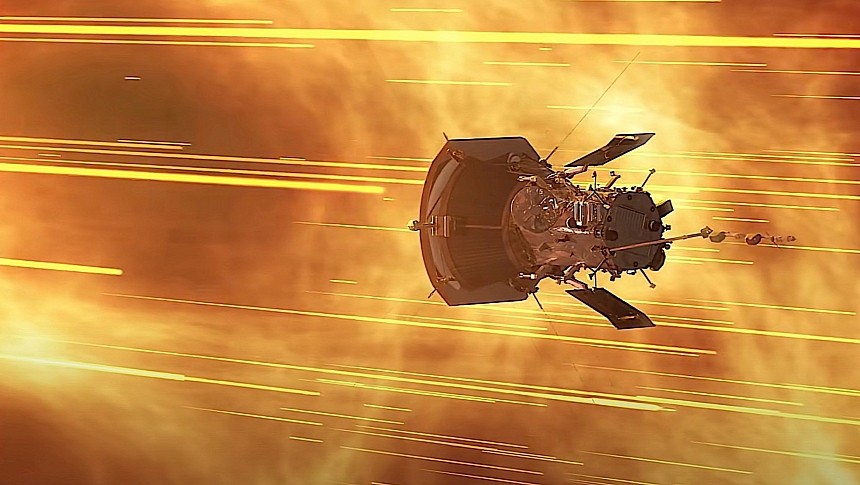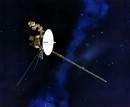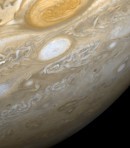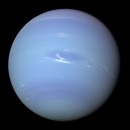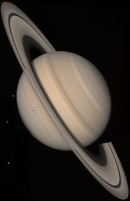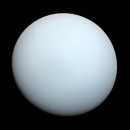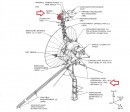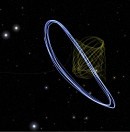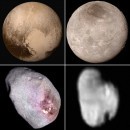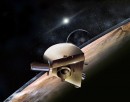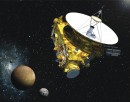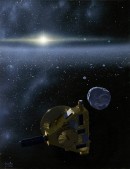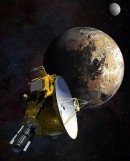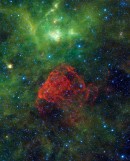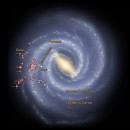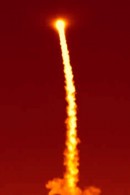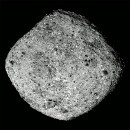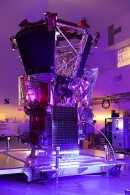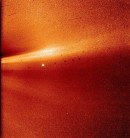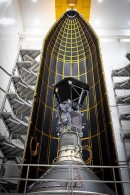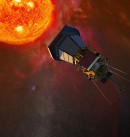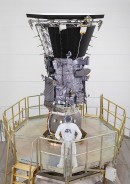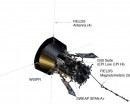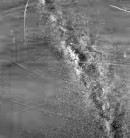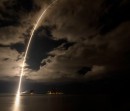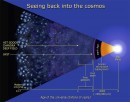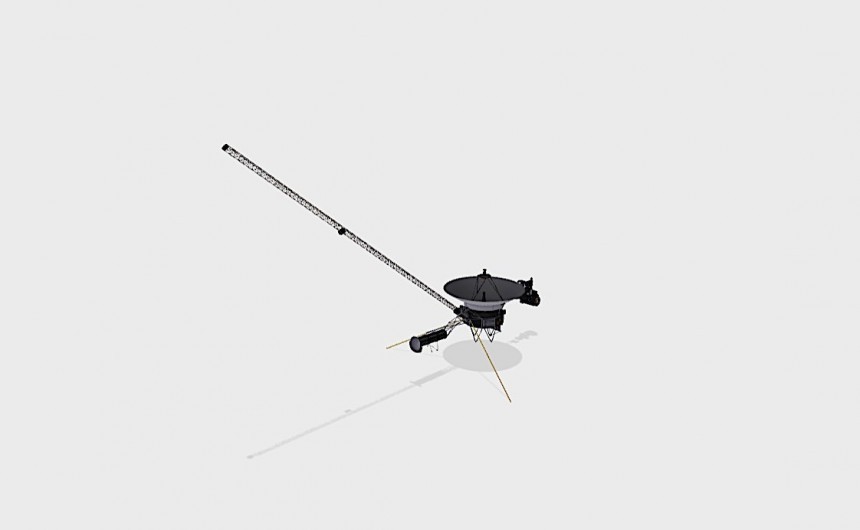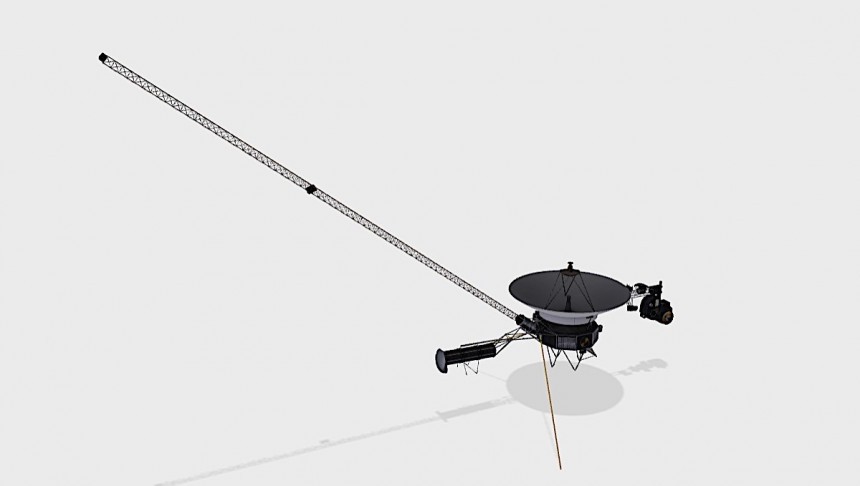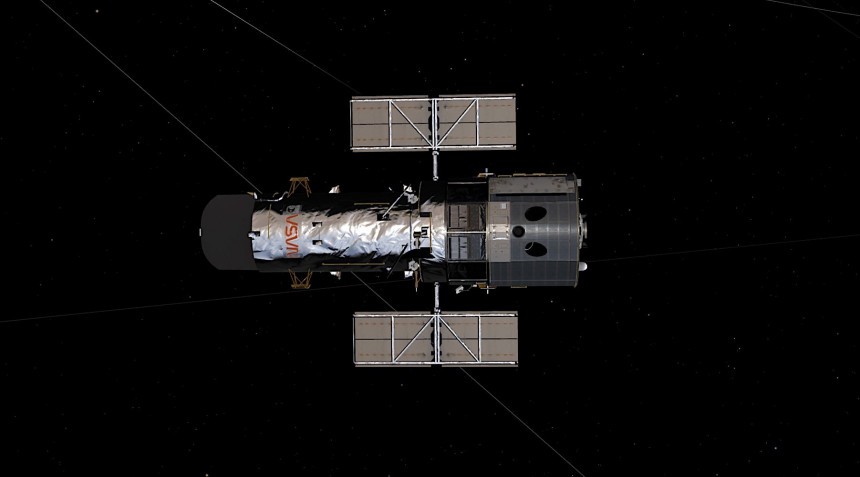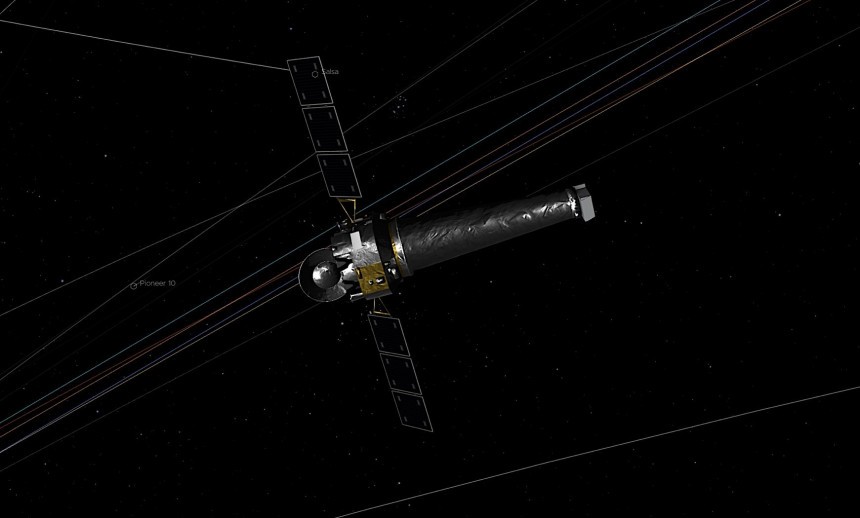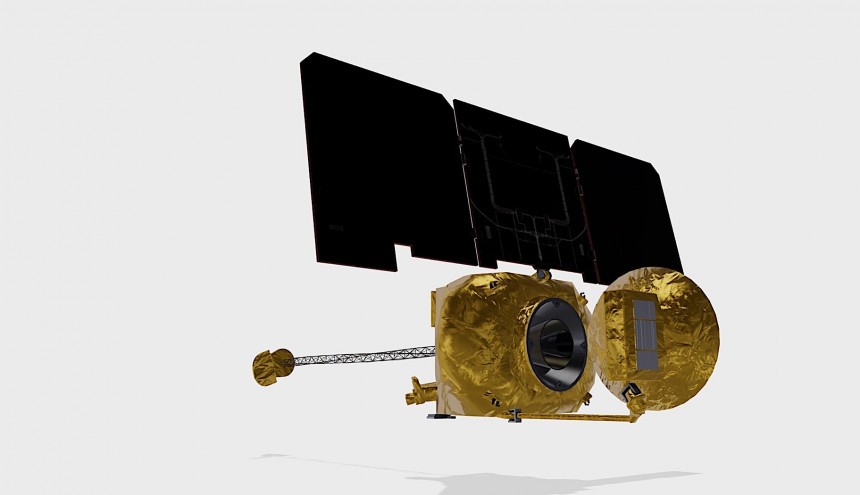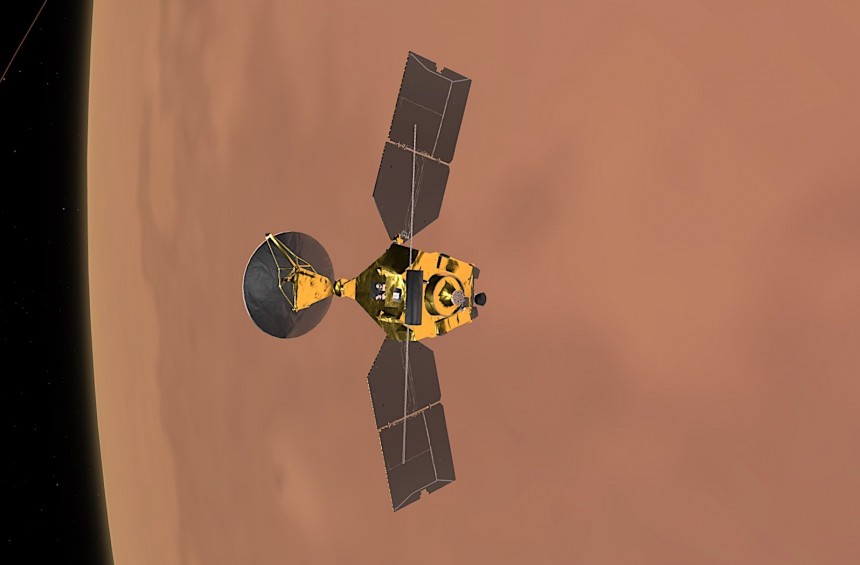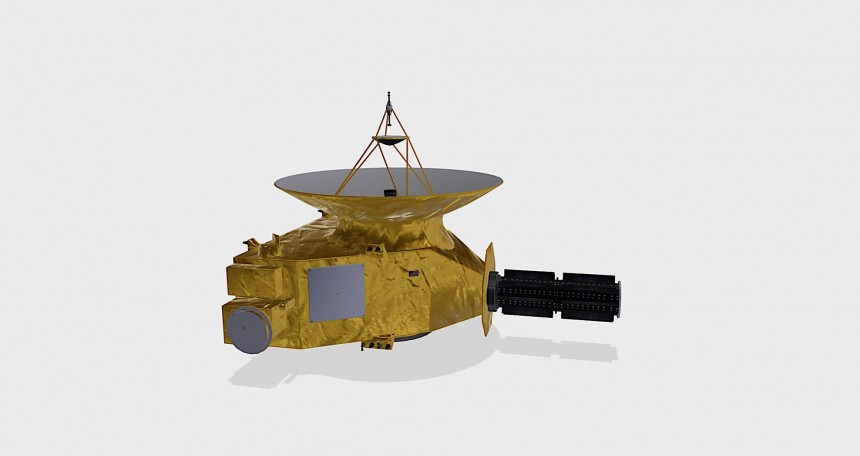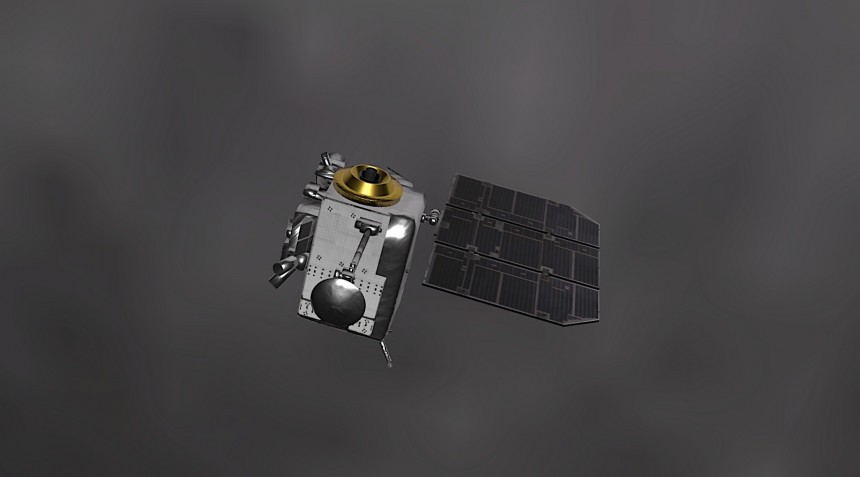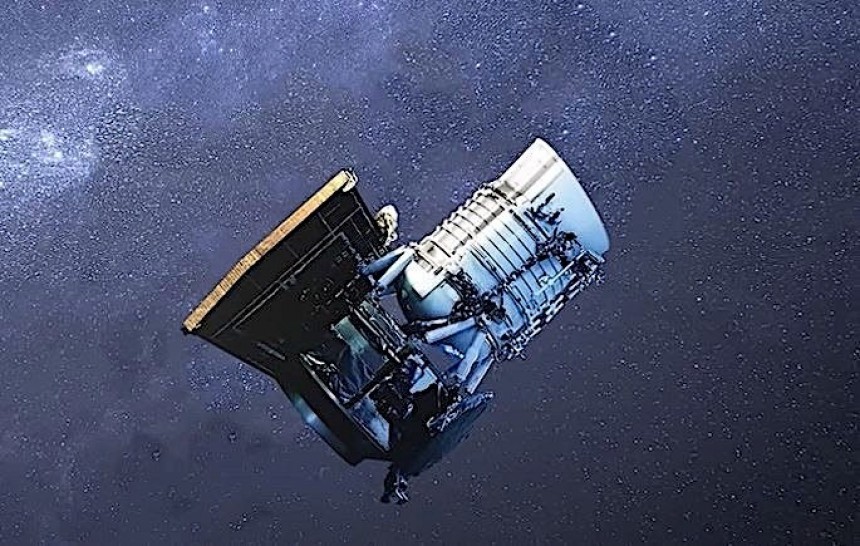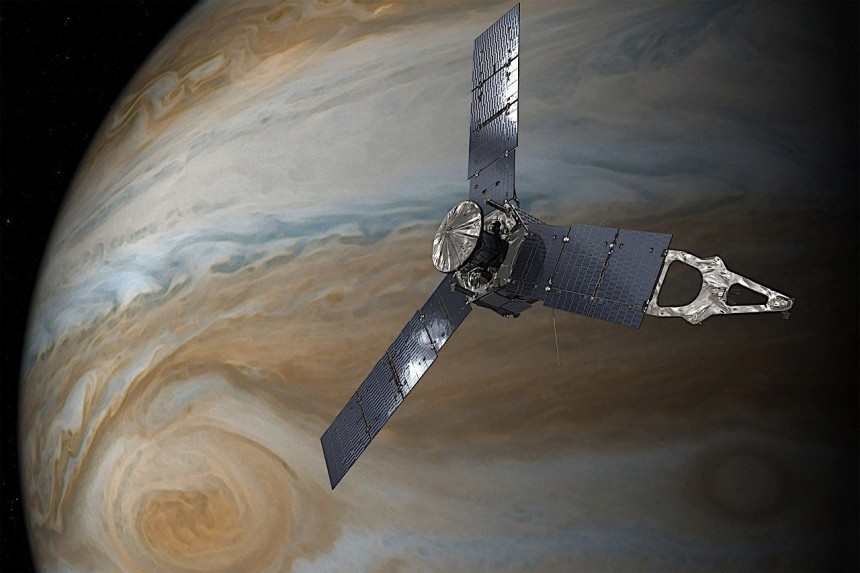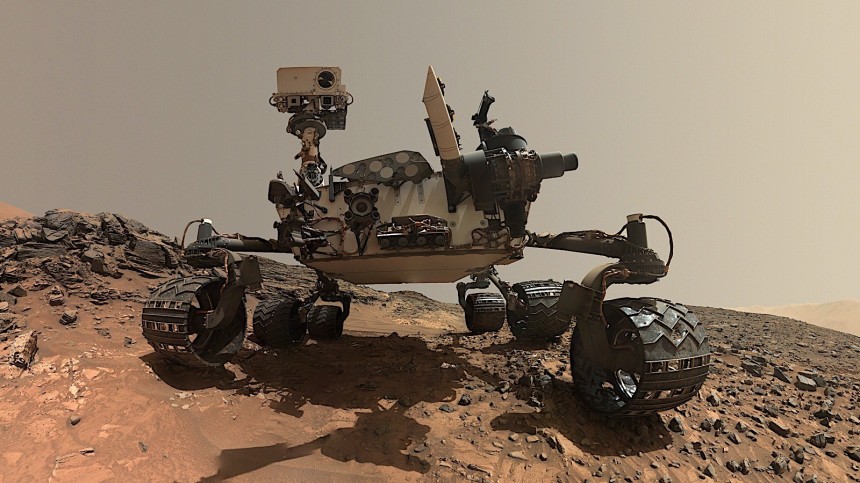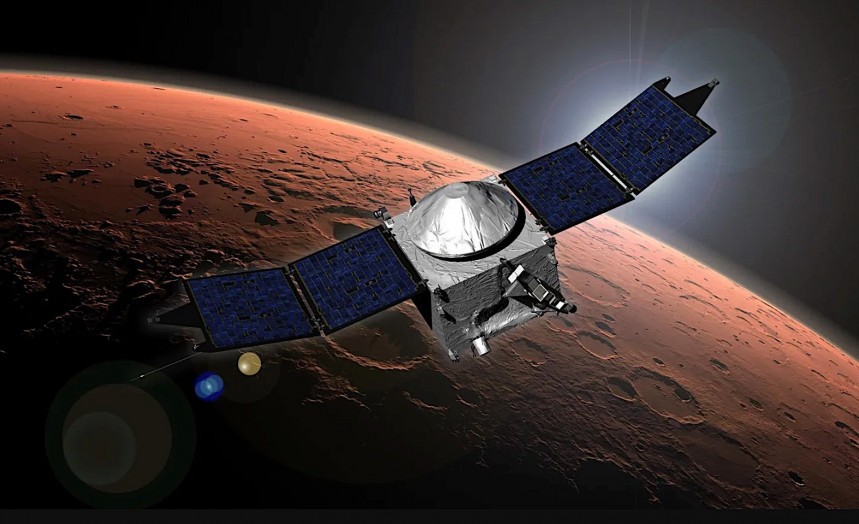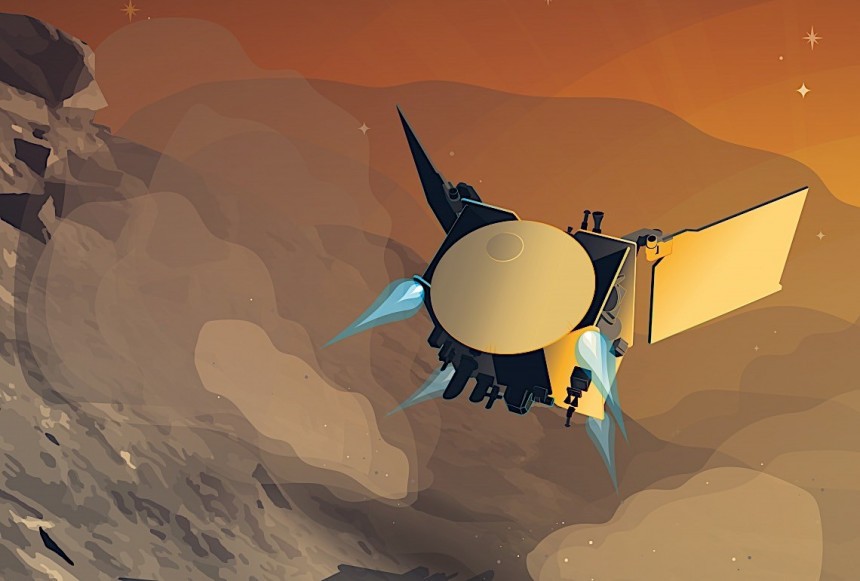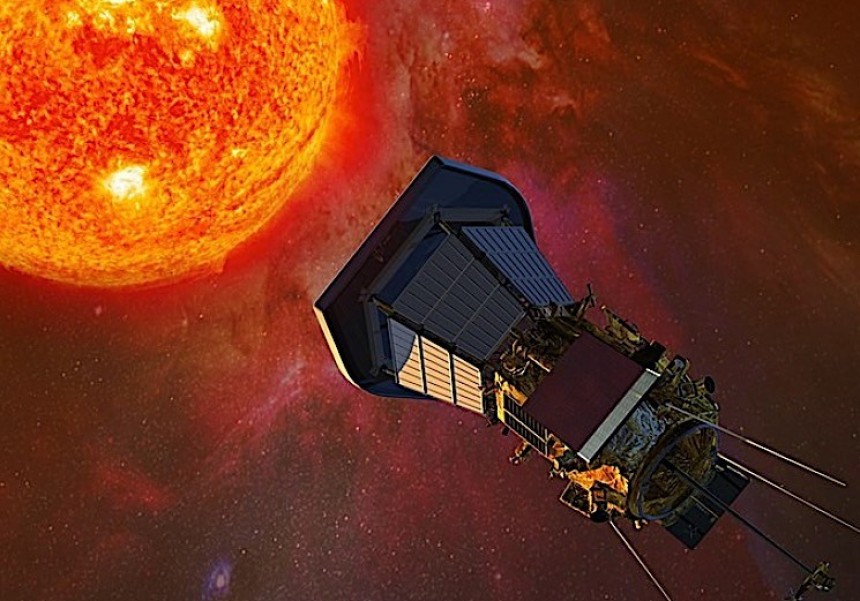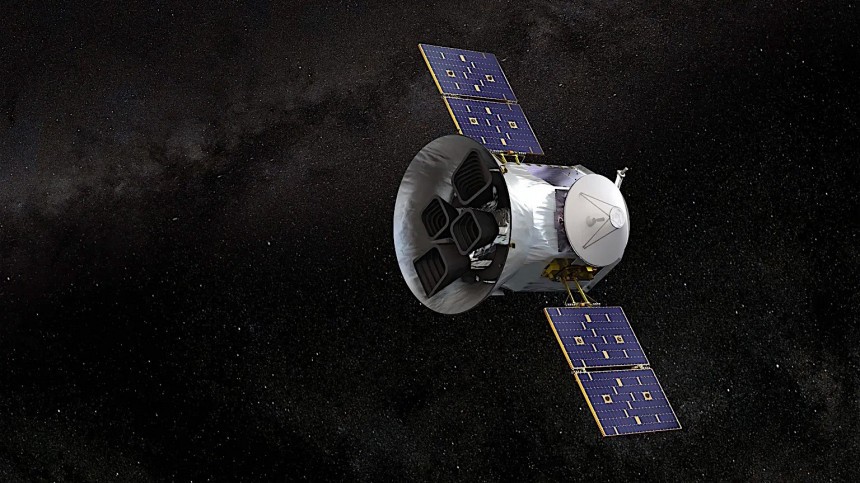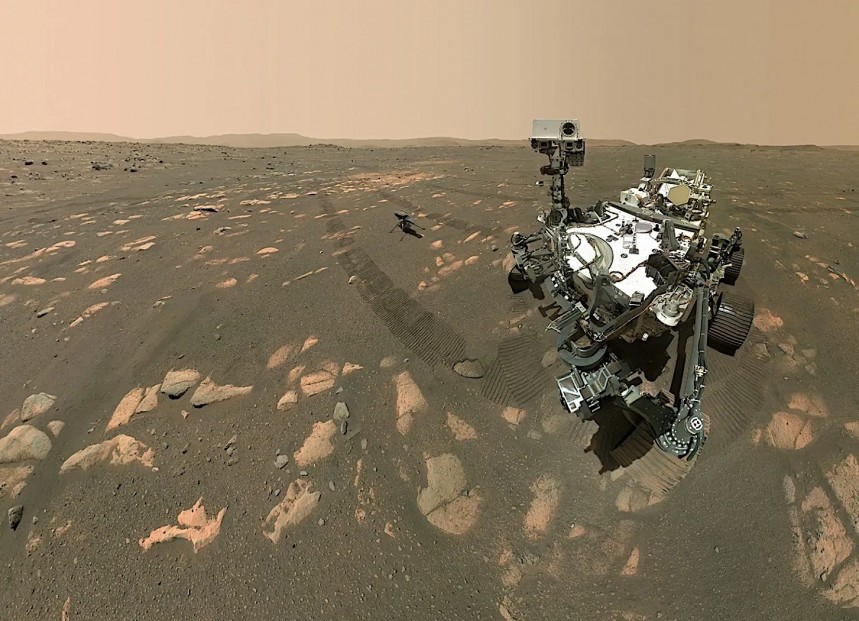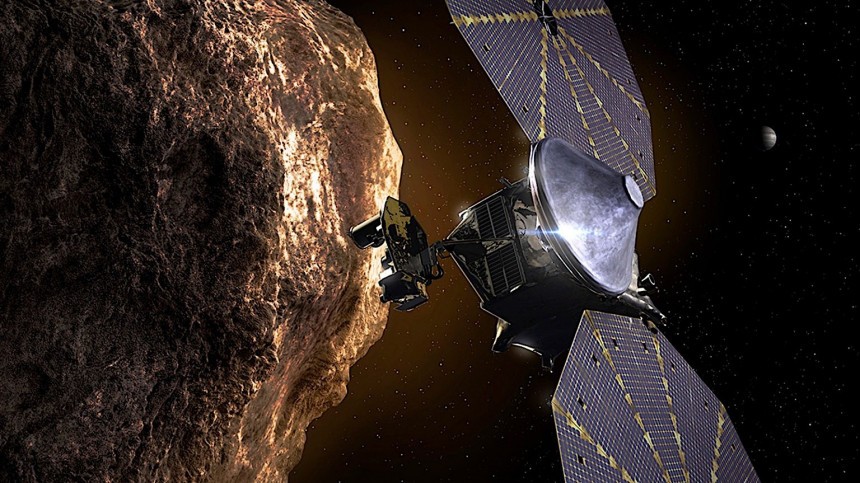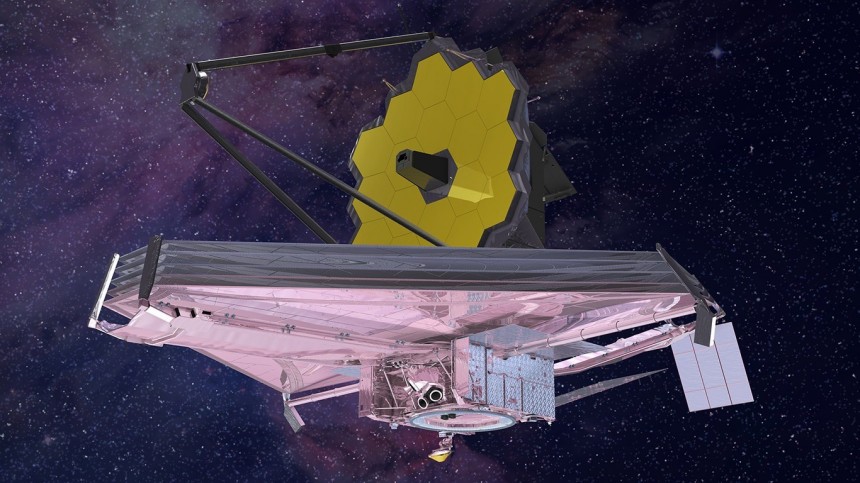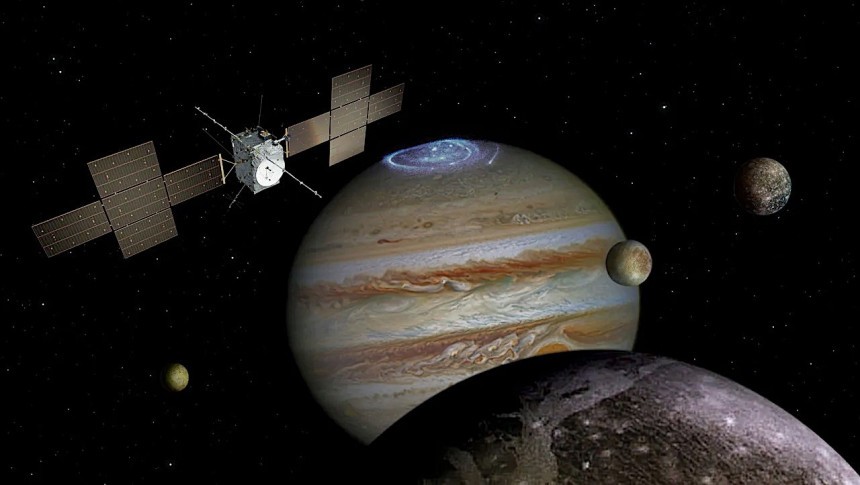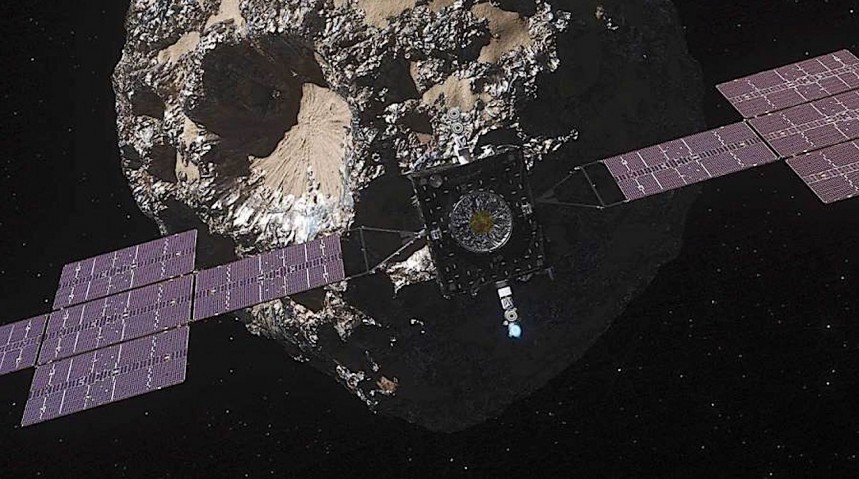Our planet supports a total of 193 internationally recognized countries, but less than half of them, around 77, have their own space agency. For all intents and purposes, that means that less than half of the world's nations have both the will and the means to look up to the sky and actually do something to get there.
I'm not entirely sure if anybody did the math on this, but oftentimes it seems a single space agency, the American one, is bigger and more active than all of the others combined. Established as far back as 1915 as the National Advisory Committee for Aeronautics (NACA), the present-day NASA (National Aeronautics and Space Administration) is the engine that drives our species to the stars.
The agency is involved in projects so diverse and numerous it becomes at times very difficult to keep track of them all. It not only tries to advance our knowledge and reach in space but also in aviation, weather prediction, ocean research, you name it.
Yet NASA remains, first and foremost, a group tasked with looking at the future, a future of humanity that not only includes Mother Earth but also other planets. To many, such dealings, with no concrete result in sight, may seem like a waste of time and resources. To others, myself included, every single thing NASA does seems like another building block added to the base of a future when we, humankind, rule the stars. Not by force, but through science missions and the search to know more.
I said earlier that NASA is involved in so many things that it's almost impossible to keep track of them all. When it comes to the agency's main area of expertise, space, there are presently over 100 active NASA missions, each and every one of them with its own dedicated spacecraft doing its own dedicated thing.
Below you will find a list of 20 of them we consider to be the most high-profile. And by that I mean these are the missions that have done things never achieved before, have gone further into space than anything else made by humans, or have broken some kind of record no one really knew existed.
This is, if you will, the ultimate list of active NASA missions, the ones future generations might learn about in school, honor in museums, and experience in movies. Listed by the year of launch, of course.
At number 19 you'll get to meet the spacecraft that has reached the farthest point in space from Earth to date, Voyager 1. Just like the spacecraft you're reading about now, it's a mission 46 years old and counting, but not the oldest active NASA mission.
That honor belongs to this here Voyager 2, which despite its name launched ahead of Voyager 1 in 1977. Designed as a mission meant to do a flyby of Uranus and Neptune, this spacecraft is the veteran of space exploration missions.
It's also the ship to reach the second farthest point from Earth, presently doing its thing (which is sending back science data) at a distance of 12.641 million miles (20.343 million km) from home. How far is that? Well, technically outside the solar system and into a region of space that's completely uncharted.
During the time spent out there, Voyager 2 became the only spacecraft to have a close look at all the four giant planets of our solar system (Neptune, Uranus, Saturn, and Jupiter), it discovered 16 moons in the area, and let Earth know Neptune has four big rings around it.
There is no end date for the Voyager 2 mission, so it'll keep going for as long as it can.
Of all the spacecraft, rovers and other kind of hardware listed here, none has traveled as far out as Voyager 1. The machine was launched back in 1977 with the goal of performing a flyby of Jupiter and Saturn, but kept on going and it is presently at the farthest point from Earth any human-made object has ever made it to.
How far, you ask? At the time of writing the thing is over 15.140 million miles (24.365 million km) from home. I know, I know, that doesn't really mean anything, as it's extremely difficult to imagine such distances.
So consider this: Voyager 1 is so far out that it has officially left our solar system. I mean the thing is now officially in interstellar space, heading out, apparently with no aim, into the great void that separates the solar systems of our galaxy.
The spacecraft stepped over Sol's border in August 2012, but even if it is incredibly far, it still continues to collect data and send it back to Earth. It was the first spaceship of our species to do so, and if it ever encounters an alien species, it will delight them with greetings in 55 Earth languages, pictures of people and places on our planet, and even music by Beethoven and Chuck Berry.
Voyager 1 is responsible for the discovery of two moons and a ring around Jupiter, and five moons and a ring around Saturn.
The ship doesn't have an expiration date either, and it'll keep going probably forever. The only thing that will eventually end is its connection to our planet.
Few of the many space telescopes launched over the years come close to the fame and importance of the Hubble. Launched all the way back in 1990, the grandfather of all modern-day telescopes still manages to surprise to this day.
The tool is so important in NASA's arsenal that the space agency says it changed humanity's understanding of the Universe forever. "Hubble science has rewritten astronomy textbooks as its discoveries continually provide deeper explanations of astronomical objects and unveil new phenomena," the NASA Hubble chant goes.
Designed to look at the Universe in a way never-before-possible, Hubble made during its lifetime over one million observations, and at least one of its findings is presently included in all astronomy textbooks on this planet.
The telescope's achievements are so great it is literally impossible to talk about them all. It would be easier to say that everything we know now about the Universe is in one form or another owed to Hubble: from helping us determine the age of the Universe and the rate of its expansion to spotting two moons around Pluto and revealing that every major galaxy has a black hole at the center.
There are no actual plans to discontinue Hubble's work, but given its age the telescope will probably not make it past the year 2040.
There are many ways to look at the Universe and make sense of it. It technically all boils down to what you expect to see and find out there. The Chandra telescope, for instance, sees everything in X-rays.
The space telescope was launched in 1999 and is one of the oldest currently out there. Its main task is to pick up the X-ray emissions coming our way from the hottest regions of the Universe, exciting yet very violent places like exploding stars, clusters of galaxies, and the vicinity of black holes.
In November this year Chandra teamed up with the star of the telescope world, the James Webb, to pick up a black hole so massive it spans about as much as an entire galaxy.
At the time of writing the Chandra X-ray Observatory has enough funds to keep operating until 2025, but NASA hopes it can prove the telescope's utility so that those in the position to do so would keep it operational until the 2030s.
Believe it or not, Mars is the place in this solar system where most of humanity's space missions have gone to, more even than the number of missions to the relatively close Moon. Including rovers and even failed missions, some 50 spacecraft have made the trip to the Red Planet. Of them all, only one stands out: Mars Odyssey.
The Odyssey is officially the one that holds the record for the "longest continually active spacecraft in orbit around a planet other than Earth." That would be 22 years and counting.
The spaceship was launched in 2001 and reached Martian orbit that same year. It was meant to study the Martian environment, looking specifically for data on the planet's surface and potential dangers future astronauts might encounter. Separately, it was also to look out for the chemical and mineralogical makeup of the planet.
Mars Odyssey will forever be remembered as the one to have discovered large amounts of hydrogen in the soil, proof that ice could possibly reside just under the crust. It then spotted salt deposits.
One of the spacecraft's instruments, THEMIS, sent back from Mars over the years no less than 208,000 images in visible-light wavelengths and over 188,000 of them in thermal-infrared wavelengths.
The mission was initially planned to last until 2004, but continuous extensions have kept the spaceship up and running to this day. As it stands, no one is planning to pull the plug on the Mars Odyssey just yet.
The Mars Reconnaissance Orbiter is a peculiar case in space exploration, in that it is perhaps the only spacecraft in existence to be less famous than one of the instruments it carries. And that despite being one of the most active pieces of hardware at our disposal in orbit around Mars.
The Orbiter departed our home world in 2005 with the stated goal of looking at how Mars changes with the seasons, looking for signs of water and determining if it lasted long enough to support life, but also looking for potential landing sites for future missions.
To do all of the above the spacecraft carries with it no less than ten instruments, including cameras, imagers, and radars. One of those cameras, something called the High-Resolution Imaging Science Experiment, is a real star among space enthusiasts.
HiRISE for short, the tool snapped over the years no less than 70,000 pics of the Martian surface, many of them probably still hiding some surprises. The people running the instrument release up to ten of them per week to the public, because there's simply not enough manpower to go through them all. Just consider that by 2010 the MRO had sent back 100 terabits of data, "more than three times the amount of data from all other deep-space missions combined," as per NASA.
For what it's worth the Orbiter and its instruments managed to fulfill their mission, proving the presence of liquid carbon dioxide and water on the planet in the recent past, but also hinting that liquid water might still flow there during the summer months.
MRO is the second longest-lived spacecraft in orbit around a planet other than Earth, and there no plans to press the kill switch on it yet.
Is Pluto a planet or not? That's a dilemma for the ages not even a close flyby with the help of an Earth spacecraft wasn't able to settle.
Just like the two Voyager spacecraft of the 1970s, New Horizons is a deep space explorer. It was sent into the void in 2006 with the stated mission of making flybys of Pluto and Kuiper Belt objects. Packed with seven main instruments, it reached its main target in 2015.
New Horizons thus became the first spacecraft to reach the distant world and confirm that, tiny as it is, it has moons of its own. It also reached a place called Arrokoth, the most distant object ever explored up close by a human spacecraft – it orbits the Sun at a distance of 44.6 astronomical units, thus needing almost 298 years to do a full circle around the star.
That happened in 2019, and soon after the mission kind of lost its bearings. Unsure of what to do with it, and trying to avoid wear and tear, mission controllers put the spacecraft into hibernation in the summer of 2022.
The spacecraft still floats in the dark, awaiting orders from whoever wants to send it orders. That will most likely be NASA's Heliophysics and Astrophysics Divisions, which are looking at ways of utilizing New Horizons.
Back in 2009 NASA launched the first orbiter dedicated to mapping the surface of the Moon. Called Lunar Reconnaissance Orbiter (LRO), it was used to generate the first true 3D map of the lunar surface, something that may prove truly invaluable for the upcoming Artemis program missions.
Fitted with no less than seven main instruments, including a telescope, a neutron detector, a laser altimeter, a camera, and a radar, the LRO was powerful enough to see even down polar craters, where it spotted deposits of water ice.
At the time of its launch the orbiter was NASA's first mission to the Moon in a decade, and it still continues to circle our planet's natural satellite. The findings it's responsible for are presently being used to inform an artificial intelligence system called SHERPA (System Health Enabled Real-time Planning Advisor).
SHERPA is being used to plan the mission for NASA's first-ever robotic lunar rover, the VIPER (Volatiles Investigating Polar Exploration Rover), scheduled to launch in late 2024 with the specific mission of finding water ice deposits on the Moon.
There is no planned end date for the LRO mission.
NEOWISE is a space telescope that has lived two lives, one of the few spacecraft sent up there to get that chance.
The thing was launched in 2009 as the Wide-field Infrared Survey Explorer, or WISE for short. Its primary mission was to look at distant stars through infrared. To do that, it also used frozen hydrogen. Stuff it ran out of in 2010, forcing NASA to put it into hibernation a year after that.
The telescope was reborn in 2013, after rocket scientists decided the tools it is equipped with (minus the hydrogen, of course), are perfectly suited to spot asteroids and comets crossing the sky around our planet. It was also renamed NEOWISE, which stands for Near-Earth Object Wide-field Infrared Survey Explorer.
In the decade or so it has been active, the telescope managed to spot 3,000 near-Earth objects, including 215 we had no clue existed. It also pinpointed 25 comets, including the one known as C/2020 F3, visible with the naked eye in the Northern Hemisphere for most of 2020.
The above numbers point to NEOWISE being an incredible planetary defense tool. Sadly, it will start falling out of the sky sometime in 2025.
That is because the Sun's period of increased activity is causing Earth's atmosphere to expand. Since NEOWISE is in orbit just 300 miles (500 km) above the surface of the planet, it will begin to experience increased drag, which will pull it down into the atmosphere until it will eventually burn up.
Because of its nature and the fact that it kind of has its own planetary system (no less than 95 Moons spin around it), Jupiter has always been a prime target for human exploration. And one of the most important of our missions there is Juno, which departed Earth in 2011.
On location in the Jovian system since 2016, Juno became the first-ever human-made spacecraft to have a look below the massive clouds that spin around Jupiter. It is also at the moment NASA's most distant planetary orbiter, doing its thing millions of miles away from home.
During its time out there, the spacecraft gave us an entirely new understanding of Jupiter's atmosphere and interior.
The spacecraft's primary mission ended in 2021, but it was extended. The new mission targets the entire system, with a special focus on the moons Europa and Io. At the time of writing, the Juno mission is scheduled to end in 2025.
The machine left Earth in 2011 with the goal of determining whether the Red Planet is habitable, and if there are the right conditions for life to be present up there.
At the time of its launch Curiosity was the biggest and most advanced such mobile laboratory sent in the solar system. It packs no less than 11 science instruments, including cameras, spectrometers, sample analyzers, and environment monitoring sensors.
Back in April 2023 the rover received an over-the-air software update, its first since 2016, that will allow it to process the images it snatches faster than ever before, and improve its traction and steering.
Although the rover was supposed to be operational for just four years, like all other such machines NASA sent to Mars over the years, it's still at it, and it will continue to work wonders until it breaks for one reason or another.
MAVEN was not initially a comms relay between Earth and Mars, but was launched in 2013 as the first-ever spacecraft meat to have a look at Mars' upper atmosphere. In doing so, it helped scientists here on Earth get a better understanding of how the solar wind could have contributed to the planet turning from warm and wet to cold and dry.
The mission was initially scheduled to last for just two years, but in the usual NASA fashion (if it works, don't kill it), it's still up and running, presently "studying the structure and composition of the upper atmosphere of the Red Planet."
There are no actual plans to discontinue the mission, but the spacecraft only has fuel to last it until 2030, so we might not hear from it ever again after that.
Back In September, the spacecraft delivered 8.8 ounces (250 grams) of alien soil originating from an asteroid called Bennu. The sample is presently being cut into even smaller pieces to be distributed to laboratories across the planet for study.
The spacecraft that delivered it never landed on Earth, but only shot the sample down in a capsule. Because it is very much alive and kicking, it has been repurposed and sent back out into the solar system in search of another asteroid, one which it will only look at this time, with no samples to be returned.
The asteroid is called Apophis, one of the most infamous pieces of space rocks we know of. To suit its new goal, OSIRIS-REx was renamed OSIRIS-APEX, where the latter word stands for Apophis Explorer.
The spaceship is scheduled to meet its target in 2029, at about the same time Apophis makes a close encounter with our planet.
The mission departed in 2018, and not long after that (in 2021), it became the first one to fly through the Sun's upper atmosphere, its corona. That means it's capable of surviving incredible heat and pressure while beaming important data about what it encounters back to Earth. A 4.5-inch (11.43 cm) thick carbon-composite shield helps with that, as it can take temperatures reaching nearly 2,500 degrees Fahrenheit (1,377 Celsius).
The four instruments Parker is equipped with are meant to analyze magnetic fields, plasma, and energetic particles, as well as imagine solar wind.
The spacecraft's closest approach to the Sun, when it will come within just 3.9 million miles (6.2 million km) from the surface of the star, will take place in 2025. It is then when the insane speeds mentioned above will be reached, assisted by gravitational forces.
The mission kicked off in 2018 as one of the few to unfold in the visible light spectrum. Aside from looking specifically for new exoplanets (or, alternatively, take a closer look at the ones we already know about), the telescope also tracks other space objects that change brightness, including asteroids, pulsating stars, and supernovae.
Most recently it had a look at a planet located 530 light-years from Earth, circling very closely around a red giant. The place is strange to us because a distance of just 0.5 astronomical units from its star means the planet somehow survived its Sun's peak red giant stage.
The TESS mission is currently listed as extended, and there are no plans to put an end to it anytime soon.
The main mission of the rover was to find past or present signs of life up there, but in the meantime some of the other things the machine was up to took precedence.
First up, it became the first piece of human-made gear to transform a tiny bit of the alien's world's carbon dioxide-rich atmosphere into oxygen. It did this with the help of a tool called Mars Oxygen In-Situ Resource Utilization Experiment (MOXIE) and proved those who are dreaming terraforming dreams are not wrong after all.
It then served as a platform for Ingenuity, the first-ever human helicopter to take flight on another world. In doing so, the tiny machinery proved that sustained flight in an atmosphere that is just one percent of the volume of that on Earth is very possible.
And now, although initially this mission was reserved for another rover, Perseverance is hard at work collecting samples of Martian soil and dropping them on the ground for them to be picked up by the machines that will arrive there with the Mars Sample Return mission scheduled to take off later this decade.
Technically there is no expiration date for the Perseverance rover, meaning NASA will make the most of it for as long as it can.
There's no actual reason why the spacecraft was named so, as it is not meant to be on the lookout for fossils. It launched in 2021 with the goal of visiting no less than 11 different asteroids, eight of them located in a large group of such space objects called the Trojans. The rest are in the main asteroid belt, floating in space between Mars and Jupiter.
For all intents and purposes that will make Lucy the spacecraft that has visited the most asteroids ever. It is also our species' first mission to the Trojans, which it will only reach after it has made three Earth flybys to get some gravity-assisted push.
The Lucy mission is expected to last at least 12 years from launch (until 2033), or at least that's how long it will take it to reach all its targets. What happens after that is anybody's guess.
The tool was designed, no more no less, to study every phase in the history of the Universe. It can do that thanks to pieces of hardware so powerful they can look back through space and time to the moments just after the Big Bang.
In the few years that have passed since it occupied its place at the Sun-Earth Lagrange point 2 (L2), it has already proved itself to be a worthy successor of sorts to the Hubble. It's responsible, among many other things, for the first confirmation of carbon dioxide on an exoplanet, the acquisition of the first direct image of an exoplanet, and it spotted the oldest supermassive black hole we know of to date.
Webb's presence in our lives is just beginning, and by simply combining the rate at which it uncovers wonders with the lifetime expectancy of some 20 years, we can start hoping the telescope will really unravel the great unknown for us.
Not all are suitable for us, but the main ones, meaning Ganymede, Europa, and Callisto, come with the promise of hiding oceans of water in one form or another. And a spacecraft called Jupiter Icy Moons Explorer (JUICE) started heading out there this year to find out more.
Technically speaking JUICE is a European Space Agency mission, but NASA does have its fingers in it as well.
JUICE will reach the Jovian system in 2031, and it will spend three years studying the planet's icy moons using cameras, spectrometers, and ice-penetrating radar.
Targeting a metal-rich asteroid by the same name, the spacecraft will reach its destination in the last year of this decade. The rock was chosen as a subject for study because it's similar to an exposed nickel-iron planet core
That's right, an exposed planetary core for us to look at with the power of human-made instruments in the hopes that we'll get a better understanding about the building blocks of our solar system and our own planet.
After reaching Psyche, the namesake spacecraft will spend two years out there studying the rock. In the meantime, though, as it heads out to a distance of 300 million miles (480 million km), the ship is used to test laser communications systems.
It recently shot a laser beam at our planet from a distance of 10 million miles (16 million km), and humans at the Caltech Palomar Observatory in San Diego, California caught it.
The agency is involved in projects so diverse and numerous it becomes at times very difficult to keep track of them all. It not only tries to advance our knowledge and reach in space but also in aviation, weather prediction, ocean research, you name it.
Yet NASA remains, first and foremost, a group tasked with looking at the future, a future of humanity that not only includes Mother Earth but also other planets. To many, such dealings, with no concrete result in sight, may seem like a waste of time and resources. To others, myself included, every single thing NASA does seems like another building block added to the base of a future when we, humankind, rule the stars. Not by force, but through science missions and the search to know more.
I said earlier that NASA is involved in so many things that it's almost impossible to keep track of them all. When it comes to the agency's main area of expertise, space, there are presently over 100 active NASA missions, each and every one of them with its own dedicated spacecraft doing its own dedicated thing.
Below you will find a list of 20 of them we consider to be the most high-profile. And by that I mean these are the missions that have done things never achieved before, have gone further into space than anything else made by humans, or have broken some kind of record no one really knew existed.
This is, if you will, the ultimate list of active NASA missions, the ones future generations might learn about in school, honor in museums, and experience in movies. Listed by the year of launch, of course.
20. Voyager 2 – the oldest spacecraft to still be operational (1977)
That honor belongs to this here Voyager 2, which despite its name launched ahead of Voyager 1 in 1977. Designed as a mission meant to do a flyby of Uranus and Neptune, this spacecraft is the veteran of space exploration missions.
It's also the ship to reach the second farthest point from Earth, presently doing its thing (which is sending back science data) at a distance of 12.641 million miles (20.343 million km) from home. How far is that? Well, technically outside the solar system and into a region of space that's completely uncharted.
During the time spent out there, Voyager 2 became the only spacecraft to have a close look at all the four giant planets of our solar system (Neptune, Uranus, Saturn, and Jupiter), it discovered 16 moons in the area, and let Earth know Neptune has four big rings around it.
There is no end date for the Voyager 2 mission, so it'll keep going for as long as it can.
19. Voyager 1 – the spacecraft that traveled the farthest from Earth (1977)
How far, you ask? At the time of writing the thing is over 15.140 million miles (24.365 million km) from home. I know, I know, that doesn't really mean anything, as it's extremely difficult to imagine such distances.
So consider this: Voyager 1 is so far out that it has officially left our solar system. I mean the thing is now officially in interstellar space, heading out, apparently with no aim, into the great void that separates the solar systems of our galaxy.
The spacecraft stepped over Sol's border in August 2012, but even if it is incredibly far, it still continues to collect data and send it back to Earth. It was the first spaceship of our species to do so, and if it ever encounters an alien species, it will delight them with greetings in 55 Earth languages, pictures of people and places on our planet, and even music by Beethoven and Chuck Berry.
Voyager 1 is responsible for the discovery of two moons and a ring around Jupiter, and five moons and a ring around Saturn.
The ship doesn't have an expiration date either, and it'll keep going probably forever. The only thing that will eventually end is its connection to our planet.
18. Hubble – the telescope that stripped the Universe bare (1990)
The tool is so important in NASA's arsenal that the space agency says it changed humanity's understanding of the Universe forever. "Hubble science has rewritten astronomy textbooks as its discoveries continually provide deeper explanations of astronomical objects and unveil new phenomena," the NASA Hubble chant goes.
Designed to look at the Universe in a way never-before-possible, Hubble made during its lifetime over one million observations, and at least one of its findings is presently included in all astronomy textbooks on this planet.
The telescope's achievements are so great it is literally impossible to talk about them all. It would be easier to say that everything we know now about the Universe is in one form or another owed to Hubble: from helping us determine the age of the Universe and the rate of its expansion to spotting two moons around Pluto and revealing that every major galaxy has a black hole at the center.
There are no actual plans to discontinue Hubble's work, but given its age the telescope will probably not make it past the year 2040.
17. Chandra X-ray Observatory – the black hole detector (1999)
The space telescope was launched in 1999 and is one of the oldest currently out there. Its main task is to pick up the X-ray emissions coming our way from the hottest regions of the Universe, exciting yet very violent places like exploding stars, clusters of galaxies, and the vicinity of black holes.
In November this year Chandra teamed up with the star of the telescope world, the James Webb, to pick up a black hole so massive it spans about as much as an entire galaxy.
At the time of writing the Chandra X-ray Observatory has enough funds to keep operating until 2025, but NASA hopes it can prove the telescope's utility so that those in the position to do so would keep it operational until the 2030s.
16. Mars Odyssey – the longest continually active spacecraft orbiting another world (2001)
The Odyssey is officially the one that holds the record for the "longest continually active spacecraft in orbit around a planet other than Earth." That would be 22 years and counting.
The spaceship was launched in 2001 and reached Martian orbit that same year. It was meant to study the Martian environment, looking specifically for data on the planet's surface and potential dangers future astronauts might encounter. Separately, it was also to look out for the chemical and mineralogical makeup of the planet.
Mars Odyssey will forever be remembered as the one to have discovered large amounts of hydrogen in the soil, proof that ice could possibly reside just under the crust. It then spotted salt deposits.
One of the spacecraft's instruments, THEMIS, sent back from Mars over the years no less than 208,000 images in visible-light wavelengths and over 188,000 of them in thermal-infrared wavelengths.
The mission was initially planned to last until 2004, but continuous extensions have kept the spaceship up and running to this day. As it stands, no one is planning to pull the plug on the Mars Odyssey just yet.
15. Mars Reconnaissance Orbiter (MRO) - a spacecraft overshadowed by one of its instruments (2005)
The Orbiter departed our home world in 2005 with the stated goal of looking at how Mars changes with the seasons, looking for signs of water and determining if it lasted long enough to support life, but also looking for potential landing sites for future missions.
To do all of the above the spacecraft carries with it no less than ten instruments, including cameras, imagers, and radars. One of those cameras, something called the High-Resolution Imaging Science Experiment, is a real star among space enthusiasts.
HiRISE for short, the tool snapped over the years no less than 70,000 pics of the Martian surface, many of them probably still hiding some surprises. The people running the instrument release up to ten of them per week to the public, because there's simply not enough manpower to go through them all. Just consider that by 2010 the MRO had sent back 100 terabits of data, "more than three times the amount of data from all other deep-space missions combined," as per NASA.
For what it's worth the Orbiter and its instruments managed to fulfill their mission, proving the presence of liquid carbon dioxide and water on the planet in the recent past, but also hinting that liquid water might still flow there during the summer months.
MRO is the second longest-lived spacecraft in orbit around a planet other than Earth, and there no plans to press the kill switch on it yet.
14. New Horizons – the first spacecraft to Pluto (2006)
Just like the two Voyager spacecraft of the 1970s, New Horizons is a deep space explorer. It was sent into the void in 2006 with the stated mission of making flybys of Pluto and Kuiper Belt objects. Packed with seven main instruments, it reached its main target in 2015.
New Horizons thus became the first spacecraft to reach the distant world and confirm that, tiny as it is, it has moons of its own. It also reached a place called Arrokoth, the most distant object ever explored up close by a human spacecraft – it orbits the Sun at a distance of 44.6 astronomical units, thus needing almost 298 years to do a full circle around the star.
That happened in 2019, and soon after the mission kind of lost its bearings. Unsure of what to do with it, and trying to avoid wear and tear, mission controllers put the spacecraft into hibernation in the summer of 2022.
The spacecraft still floats in the dark, awaiting orders from whoever wants to send it orders. That will most likely be NASA's Heliophysics and Astrophysics Divisions, which are looking at ways of utilizing New Horizons.
13. Lunar Reconnaissance Orbiter – making 3D maps of the Moon (2009)
Fitted with no less than seven main instruments, including a telescope, a neutron detector, a laser altimeter, a camera, and a radar, the LRO was powerful enough to see even down polar craters, where it spotted deposits of water ice.
At the time of its launch the orbiter was NASA's first mission to the Moon in a decade, and it still continues to circle our planet's natural satellite. The findings it's responsible for are presently being used to inform an artificial intelligence system called SHERPA (System Health Enabled Real-time Planning Advisor).
SHERPA is being used to plan the mission for NASA's first-ever robotic lunar rover, the VIPER (Volatiles Investigating Polar Exploration Rover), scheduled to launch in late 2024 with the specific mission of finding water ice deposits on the Moon.
There is no planned end date for the LRO mission.
12. NEOWISE – the asteroid spotter that will fall out of the sky (2009)
The thing was launched in 2009 as the Wide-field Infrared Survey Explorer, or WISE for short. Its primary mission was to look at distant stars through infrared. To do that, it also used frozen hydrogen. Stuff it ran out of in 2010, forcing NASA to put it into hibernation a year after that.
The telescope was reborn in 2013, after rocket scientists decided the tools it is equipped with (minus the hydrogen, of course), are perfectly suited to spot asteroids and comets crossing the sky around our planet. It was also renamed NEOWISE, which stands for Near-Earth Object Wide-field Infrared Survey Explorer.
In the decade or so it has been active, the telescope managed to spot 3,000 near-Earth objects, including 215 we had no clue existed. It also pinpointed 25 comets, including the one known as C/2020 F3, visible with the naked eye in the Northern Hemisphere for most of 2020.
The above numbers point to NEOWISE being an incredible planetary defense tool. Sadly, it will start falling out of the sky sometime in 2025.
That is because the Sun's period of increased activity is causing Earth's atmosphere to expand. Since NEOWISE is in orbit just 300 miles (500 km) above the surface of the planet, it will begin to experience increased drag, which will pull it down into the atmosphere until it will eventually burn up.
11. Juno – NASA's most distant planetary orbiter (2011)
On location in the Jovian system since 2016, Juno became the first-ever human-made spacecraft to have a look below the massive clouds that spin around Jupiter. It is also at the moment NASA's most distant planetary orbiter, doing its thing millions of miles away from home.
During its time out there, the spacecraft gave us an entirely new understanding of Jupiter's atmosphere and interior.
The spacecraft's primary mission ended in 2021, but it was extended. The new mission targets the entire system, with a special focus on the moons Europa and Io. At the time of writing, the Juno mission is scheduled to end in 2025.
10. Curiosity – from the sturdy breed of Mars rovers (2011)
Before its demise, the Opportunity rover was humanity's longest-lasting rover on Mars, having been on the job for almost 15 years. Presently, the oldest rover still active up there, and the only other one aside from Perseverance, is the Curiosity.The machine left Earth in 2011 with the goal of determining whether the Red Planet is habitable, and if there are the right conditions for life to be present up there.
At the time of its launch Curiosity was the biggest and most advanced such mobile laboratory sent in the solar system. It packs no less than 11 science instruments, including cameras, spectrometers, sample analyzers, and environment monitoring sensors.
Back in April 2023 the rover received an over-the-air software update, its first since 2016, that will allow it to process the images it snatches faster than ever before, and improve its traction and steering.
Although the rover was supposed to be operational for just four years, like all other such machines NASA sent to Mars over the years, it's still at it, and it will continue to work wonders until it breaks for one reason or another.
9. MAVEN – the space relay in orbit around Mars (2013)
Have you ever wondered how signals and commands generated here on Mars make their way to the Curiosity and Perseverance rovers all the way over on Mars? It's simple, really: humans beam their comms out, which are captured in Mars orbit by MAVEN, and then sent down to the rovers. And the rovers talk back the same way.MAVEN was not initially a comms relay between Earth and Mars, but was launched in 2013 as the first-ever spacecraft meat to have a look at Mars' upper atmosphere. In doing so, it helped scientists here on Earth get a better understanding of how the solar wind could have contributed to the planet turning from warm and wet to cold and dry.
The mission was initially scheduled to last for just two years, but in the usual NASA fashion (if it works, don't kill it), it's still up and running, presently "studying the structure and composition of the upper atmosphere of the Red Planet."
There are no actual plans to discontinue the mission, but the spacecraft only has fuel to last it until 2030, so we might not hear from it ever again after that.
8. OSIRIS-APEX – going after one of the most infamous asteroids (2016)
Somewhat under the radar, humanity's technological level evolved enough to allow two nations living on this blue marble, Japan and the U.S., to send into space their own asteroid sample recovery missions. The American one, called Origins, Spectral Interpretation, Resource Identification, and Security–Regolith Explorer (OSIRIS-REx), came to a glorious conclusion this year.Back In September, the spacecraft delivered 8.8 ounces (250 grams) of alien soil originating from an asteroid called Bennu. The sample is presently being cut into even smaller pieces to be distributed to laboratories across the planet for study.
The spacecraft that delivered it never landed on Earth, but only shot the sample down in a capsule. Because it is very much alive and kicking, it has been repurposed and sent back out into the solar system in search of another asteroid, one which it will only look at this time, with no samples to be returned.
The asteroid is called Apophis, one of the most infamous pieces of space rocks we know of. To suit its new goal, OSIRIS-REx was renamed OSIRIS-APEX, where the latter word stands for Apophis Explorer.
The spaceship is scheduled to meet its target in 2029, at about the same time Apophis makes a close encounter with our planet.
7. Parker Solar Probe – the fastest spacecraft in history (2018)
With top speeds that can reach a staggering 430,000 miles per hour (692,000 kph), the Parker Solar Probe is the fastest spacecraft ever to leave our planet. Its mission, as the name says, is to study the solar system's only star in the hopes we'll get a better understanding of how the thing works.The mission departed in 2018, and not long after that (in 2021), it became the first one to fly through the Sun's upper atmosphere, its corona. That means it's capable of surviving incredible heat and pressure while beaming important data about what it encounters back to Earth. A 4.5-inch (11.43 cm) thick carbon-composite shield helps with that, as it can take temperatures reaching nearly 2,500 degrees Fahrenheit (1,377 Celsius).
The four instruments Parker is equipped with are meant to analyze magnetic fields, plasma, and energetic particles, as well as imagine solar wind.
The spacecraft's closest approach to the Sun, when it will come within just 3.9 million miles (6.2 million km) from the surface of the star, will take place in 2025. It is then when the insane speeds mentioned above will be reached, assisted by gravitational forces.
6. Transiting Exoplanet Survey Satellite (TESS) – looking for planets outside our solar system (2018)
There are many telescopes now in operation, both in space and here on the surface of the planet, but not many of them are specifically tasked with finding exoplanets. TESS is one of them, and that's obvious from its expanded name: Transiting Exoplanet Survey Satellite.The mission kicked off in 2018 as one of the few to unfold in the visible light spectrum. Aside from looking specifically for new exoplanets (or, alternatively, take a closer look at the ones we already know about), the telescope also tracks other space objects that change brightness, including asteroids, pulsating stars, and supernovae.
Most recently it had a look at a planet located 530 light-years from Earth, circling very closely around a red giant. The place is strange to us because a distance of just 0.5 astronomical units from its star means the planet somehow survived its Sun's peak red giant stage.
The TESS mission is currently listed as extended, and there are no plans to put an end to it anytime soon.
5. Perseverance – the Mars rover to shame all previous rovers (2020)
In the (Earth) spring of 2021, humanity's most advanced Martian rover landed in the Jezero Crater on the Red planet. It carried with it science instruments to last a lifetime, and it has already turned some of the things we knew about Mars on their heads.The main mission of the rover was to find past or present signs of life up there, but in the meantime some of the other things the machine was up to took precedence.
First up, it became the first piece of human-made gear to transform a tiny bit of the alien's world's carbon dioxide-rich atmosphere into oxygen. It did this with the help of a tool called Mars Oxygen In-Situ Resource Utilization Experiment (MOXIE) and proved those who are dreaming terraforming dreams are not wrong after all.
It then served as a platform for Ingenuity, the first-ever human helicopter to take flight on another world. In doing so, the tiny machinery proved that sustained flight in an atmosphere that is just one percent of the volume of that on Earth is very possible.
And now, although initially this mission was reserved for another rover, Perseverance is hard at work collecting samples of Martian soil and dropping them on the ground for them to be picked up by the machines that will arrive there with the Mars Sample Return mission scheduled to take off later this decade.
Technically there is no expiration date for the Perseverance rover, meaning NASA will make the most of it for as long as it can.
4. Lucy – the spacecraft to break the record for number of asteroids visited (2021)
NASA has a real tendency to name its spacecraft with forced acronyms that basically result from the mission's description. That's not the case with Lucy, a probe named after the remnants of a female Australopithecus afarensis discovered in Africa in the 1970s.There's no actual reason why the spacecraft was named so, as it is not meant to be on the lookout for fossils. It launched in 2021 with the goal of visiting no less than 11 different asteroids, eight of them located in a large group of such space objects called the Trojans. The rest are in the main asteroid belt, floating in space between Mars and Jupiter.
For all intents and purposes that will make Lucy the spacecraft that has visited the most asteroids ever. It is also our species' first mission to the Trojans, which it will only reach after it has made three Earth flybys to get some gravity-assisted push.
The Lucy mission is expected to last at least 12 years from launch (until 2033), or at least that's how long it will take it to reach all its targets. What happens after that is anybody's guess.
3. James Webb Space Telescope – the most complex, most expensive telescope ever (2021)
The James Webb Space Telescope has everything it takes to be for our generation what Hubble was for the previous one. Launched in 2021 as the most complex and most expensive (some $10 billion were spent on it) telescope ever made, it has already turned some of the things we thought we knew about the Universe on their heads.The tool was designed, no more no less, to study every phase in the history of the Universe. It can do that thanks to pieces of hardware so powerful they can look back through space and time to the moments just after the Big Bang.
In the few years that have passed since it occupied its place at the Sun-Earth Lagrange point 2 (L2), it has already proved itself to be a worthy successor of sorts to the Hubble. It's responsible, among many other things, for the first confirmation of carbon dioxide on an exoplanet, the acquisition of the first direct image of an exoplanet, and it spotted the oldest supermassive black hole we know of to date.
Webb's presence in our lives is just beginning, and by simply combining the rate at which it uncovers wonders with the lifetime expectancy of some 20 years, we can start hoping the telescope will really unravel the great unknown for us.
2. Jupiter Icy Moons Explorer (JUICE) – heading for Jupiter's moons (2023)
Many of the works of sci-fi literature describing the future of humanity in the solar system bet on our species someday colonizing the many moons of the system's giant planets. And what better target for us than Jupiter, which has no less than 95 of them?Not all are suitable for us, but the main ones, meaning Ganymede, Europa, and Callisto, come with the promise of hiding oceans of water in one form or another. And a spacecraft called Jupiter Icy Moons Explorer (JUICE) started heading out there this year to find out more.
Technically speaking JUICE is a European Space Agency mission, but NASA does have its fingers in it as well.
JUICE will reach the Jovian system in 2031, and it will spend three years studying the planet's icy moons using cameras, spectrometers, and ice-penetrating radar.
1. Psyche - the one shooting lasers on its way to its main target (2023)
A quick look at the spacecraft and missions listed above will make it painfully clear that humanity's main goal in space exploration in this day and age is to take a closer look at the asteroids of our solar system. The Psyche mission, launched in October 2023, is no exception.Targeting a metal-rich asteroid by the same name, the spacecraft will reach its destination in the last year of this decade. The rock was chosen as a subject for study because it's similar to an exposed nickel-iron planet core
That's right, an exposed planetary core for us to look at with the power of human-made instruments in the hopes that we'll get a better understanding about the building blocks of our solar system and our own planet.
After reaching Psyche, the namesake spacecraft will spend two years out there studying the rock. In the meantime, though, as it heads out to a distance of 300 million miles (480 million km), the ship is used to test laser communications systems.
It recently shot a laser beam at our planet from a distance of 10 million miles (16 million km), and humans at the Caltech Palomar Observatory in San Diego, California caught it.
